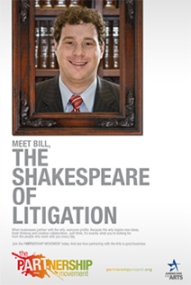
John Bryan
Do Business Executives Believe Artistic Pursuits Add Value to Their Work? (from The pARTnership Movement)
Posted by Jan 24, 2013

John Bryan
 John Bryan
John Bryan
Richard Florida’s The Rise of the Creative Class is now 11 years old, and the notion that left-brained corporate types can benefit from right-brained creative types is acknowledged as gospel. Although Florida’s work has resulted in blue-chip value for “creative thinkers,” there is no empirical evidence to show whether business executives claim any workplace value for their own personal artistic pursuits. Indeed, do the personal artistic pursuits of business workers add value to the corporate workplace? The exploration of this question is one line of research that has been spawned by a recent gathering in Virginia. On November 27 in Richmond President and CEO of The Conference Board Jonathan Spector and Americans for the Arts President and CEO Robert Lynch convened 16 corporate executives and 16 artists for an eight-hour “Creative Conversation”—a day of envisioning a new transaction model between business and arts. The forever-held model is straightforward: businesses give money to the arts so that the arts can enrich their communities. Richmond’s event explored the possibility of an opposite transaction model. Can corporations benefit by reaching out to and engaging practicing artists? Participants included executives from Fortune 500 companies such as Altria, Dominion, and MeadWestvaco; leaders from service organizations such as J. Sergeant Reynolds Community College and Leadership Metro Richmond; and CEOs from specialty companies such as The Martin Agency and Richmond Times-Dispatch.
Read More

 Tim Leberecht
Tim Leberecht





























 Emily Peck
Emily Peck












 Susan Soroko
Susan Soroko

 Pam Rubert
Pam Rubert
 Laura Bruney
Laura Bruney

 Michelle Alexander (photo by Nicholas Wray)
Michelle Alexander (photo by Nicholas Wray)


 Tim McClimon
Tim McClimon




